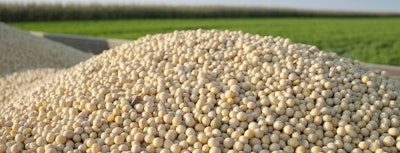
Export Sales Announcement
- Private exporters reported to the U.S. Department of Agriculture export sales of 113,000 metric tons of corn for delivery to Mexico during the 2018/2019 marketing year.
President Trump Announces $16 Billion Of Aid For Farmers
- On Thursday, May 23, the USDA announced their famer aid program which allocates $16 billion of subsidies to the U.S. farmer to help provide relief from retaliatory tariffs.
- The subsidies are available to producers of row crops, livestock and other agricultural commodities that have been impacted by tariffs from China, EU and Turkey.
- The $16 billion will be dispersed in three tranches. The first tranche will begin in late July/early August, as soon as practical after Farm Service Agency crop reporting is completed by July 15th. If conditions warrant, the second and third tranches will be made in November and early January.
- The USDA’s payment formula to determine which areas have suffered the most economic damage was not made public.
- But, the government did say that farmers “will receive a payment based on a single county rate multiplied by a farm’s total plantings to those crops in aggregate in 2019.”
- What It Means For The US Farmer: President Trump’s announcement should be viewed positively for the American farmer. While the compensation formula is undefined, at FBN we believe that the row crop producers will benefit from the cash payment. For the moment the government’s statement does bring more questions than answers. As the government provides more information about the program FBN will communicate these facts. Please contact your local FBN farm market advisor with any questions about the USDA’s program.
EPA To Release Relaxed Biofuel Credit Reform
- The Environmental Protection Agency (EPA) plans to unveil a relaxed version of its proposed biofuel credit market reform after regulators concluded many of the agency’s initial ideas required more time to study.
- The U.S. Renewable Fuel Standard requires refineries to blend biofuels into their gasoline and diesel each year, or purchase credits, called RINs, from those who do.
- The policy has helped farmers by creating a 15 billion gallon-a-year market for corn-based ethanol, but refiners have increasingly complained that compliance costs them a fortune – particularly when RIN prices are high and volatile.
- The EPA’s initial plan to reform the RIN market, would have barred trading by non-industry players, publicized large positions, improved price transparency, imposed limits on credit “hoarding,” and provided the EPA with increased market-monitoring powers.
- What It Means For The US Farmer: At FBN we believe that the EPA’s structural overhaul of the RIN market has the ability to provide greater consistency to the production process. At FBN we also believe that by providing additional clarity to the RIN market and reducing speculative trading in the secondary market can provide a more consistent demand for cash inputs like corn and soybean oil. Additionally we believe that greater consistency can be a benefit to the farmer.
The risk of trading futures, hedging, and speculating can be substantial. FBN BR LLC (NFA ID: 0508695)















